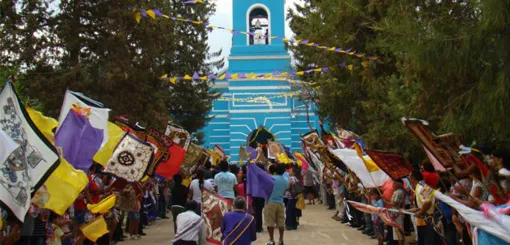The provi nce of La Rioja, in the northwest of Argentina, 1150 kilometers from the city of Buenos Aires, is known for its natural landscapes and its deep-rooted Catholic tradition.
nce of La Rioja, in the northwest of Argentina, 1150 kilometers from the city of Buenos Aires, is known for its natural landscapes and its deep-rooted Catholic tradition.
Known as the circuit "Sendas del Espíritu Católico Riojano" (Paths of the Catholic Spirit from La Rioja), the tour mixes Catholic worship with local rites, in traditions that are almost unknown even in Argentina but which show how the mixing of cultures took place once the cruelty of the Conquest was over.
In the capital of the province, the first landmark of the trail is known as "A saint made of orange wood", in the Convent of San Francisco, where the cell and the orange tree planted by the friar San Francisco Solano, who arrived in these lands at the end of 1585 as a "missionary apostle", walking the 1,500 kilometers from Lima (Peru).
On his way, the Spanish friar crossed the present territories of the Argentine provinces of Salta, Santiago del Estero and Córdoba, where he built temples and converted indigenous people into Christianity. There are many accounts of the miracles that the friar performed.
But the most important one, which was outstanding for his canonization, was in 1593 when several Indian tribes threatened to advance on the city recently founded by the Spaniard Juan Ramírez de Velasco (to few kilometers of the today Riojan capital).
According to the legend, Francisco went out to find them with his crucifix, his violin and his prayer book. With "only the music of his violin, the Indians laid down their weapons and were ready to listen to the prayers and explanations" that the friar made.
The convent is a majestic architectural work from the sixteenth to nineteenth centuries, with an Italian style that was transformed into an eclecticism with Gothic reminiscences. The murals tell the story of the origins of the foundation of the City of All Saints in the New Rioja.
The stained glass windows are of German origin and the stone walls give it a rustic style.
There is also the cathedral with the old image of San Nicolás de Bari, patron saint of the province; the Church and Convent of Santo Domingo; and the church of the Virgen de la Merced.
Podcast: Bajar
Suscribirse en ¿Qué es Nacional Podcasts?








